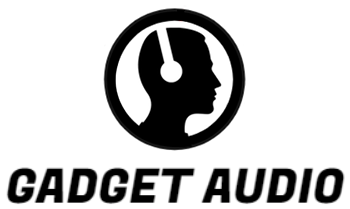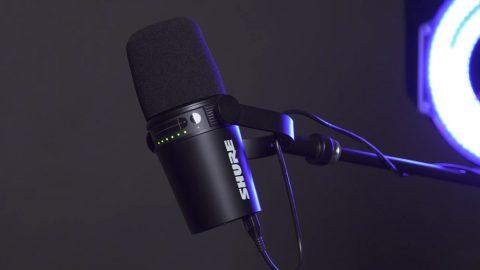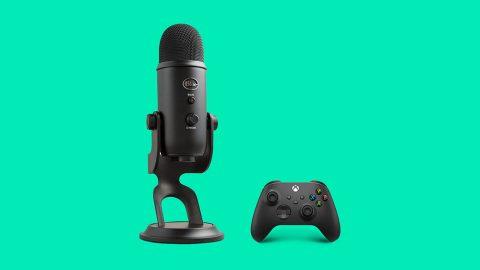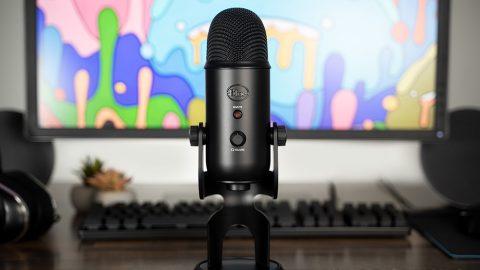6 Simple Steps to Fix Microphone Latency and Improve Your Audio Quality

Microphone latency can be a major problem for anyone working with audio, whether you’re a musician recording in a studio, a podcaster working from home, or a remote worker on a video call. In this article, we’ll explore the problems with microphone latency, how it can impact your work, and what you can do to reduce or eliminate it.
How to fix microphone latency:
- Reduce buffer size
- Upgrade equipment
- Use a dedicated audio interface
- Adjust software settings
- Use a wired connection
- Try a different microphone
What Is Microphone Latency?
Microphone latency refers to the delay between when a sound is made and when it is recorded by a microphone. This is the time it takes for an audio signal to travel from the sound source to the microphone and then be processed by any digital signal processing (DSP) that may be in use.
Latency can occur for various reasons, such as the time it takes for the audio signal to travel through the microphone cable or wireless connection or due to processing delays in the audio interface or computer software.
In practical terms, latency can be noticeable when recording and monitoring audio in real-time, especially in situations where precise timing is important, such as in music production or live performances. It can also be a problem during online video or audio calls, where latency can cause delays in conversation and create an unnatural communication experience.
Reducing latency is a crucial part of ensuring high-quality audio recording and transmission, and various techniques and technologies are used to minimize it.
Why Is Microphone Latency Important?
Microphone latency is important for a variety of reasons, depending on the specific application. Minimizing latency is crucial for creating high-quality audio in a variety of contexts and is an ongoing concern for audio engineers, musicians, and anyone who uses microphones to record or transmit audio. Here are a few examples:
Real-time Monitoring
Latency can affect the ability of musicians and performers to monitor their own performance in real-time. For example, if a singer hears their own voice through headphones delayed by a few milliseconds, it can be distracting and make it difficult to sing in time with the music.
Timing and Synchronization
In recording, production, and broadcasting, timing and synchronization are critical to creating high-quality audio. If latency is present, it can cause timing issues between different tracks or instruments, resulting in a less polished and less professional end product.
Interactivity
In online video and audio communication, such as teleconferencing or video streaming, latency can make conversations feel unnatural and disjointed. In this context, even small delays can make it difficult for participants to have a smooth, natural conversation.
Performance
Latency can also impact the performance of digital signal processing algorithms, such as audio effects or speech recognition software. If there is too much latency, the processing may become ineffective. This can lead to issues with clarity, accuracy, or overall quality.
How to Fix Microphone Latency?
There are several ways to fix microphone latency, depending on the specific cause and context of the issue. Here are a few potential solutions:
1. Reduce Buffer Size
In digital audio interfaces, increasing the buffer size can help reduce the likelihood of audio dropouts, but it can also increase latency. To reduce latency, try decreasing the buffer size until you reach the minimum buffer size that works without any audio dropouts or glitches.
2. Upgrade Equipment
Old or outdated equipment may not be optimized for low-latency audio recording and transmission. To reduce latency and improve performance, think about upgrading your gear, such as your audio interface, microphone, or computer hardware.
3. Use Dedicated Audio Interface
If you are using a built-in microphone on a computer or mobile device, the latency may be higher than when using a dedicated audio interface. Using an external audio interface designed for low-latency recording can help reduce latency.
4. Adjust Software Settings
If you are using recording software, check the settings for any options related to latency. Some software allows you to adjust latency settings to achieve a balance between low latency and reliable recording.
5. Use Wired Connection
If you are using a wireless microphone, consider using a wired connection instead. Wireless connections can add latency due to how long it takes for the signal to travel wirelessly.
6. Try Different Microphone
Different microphones can have different latency values. If you’re experiencing latency issues, you could try using a different microphone that has a lower latency.
The best way to fix microphone latency will depend on the specific cause and context of the issue. Experiment with different settings and equipment until you find the right combination that gives you the low latency you need for high-quality audio recording and transmission.
How to Fix USB Microphone Latency
USB microphone latency can be frustrating, as it can cause a delay between the audio input and output, making it difficult to record or communicate in real time. Here are a few tips to help fix USB microphone latency:
1. Lower Sample Rate
The sample rate determines the number of samples per second the microphone records. Lowering the sample rate can help reduce the latency. You can change the sample rate in the sound settings of your operating system.
2. Adjust Buffer Size
The buffer size determines the amount of audio data that the computer processes before sending it to the output. Reducing the buffer size can reduce latency. You can adjust the buffer size in the sound settings of your operating system or in the settings of the recording software you are using.
3. Use a High-Quality USB Cable
A poor-quality USB cable can cause latency issues. If you are using a long cable, try to use a shorter one, as longer cables can cause more latency.
4. Close Unnecessary Applications
Running too many applications at the same time can cause latency issues. Try to close any unnecessary applications, especially those that use a lot of processing power, such as video editors or games.
5. Use Different USB Port
Some USB ports may have more latency than others. Try using a different USB port to see if it reduces the latency.
6. Update Drivers
Make sure your computer’s audio drivers are up to date. Outdated drivers can cause latency issues.
7. Use a Dedicated Audio Interface
If you are still experiencing latency issues, consider using a dedicated audio interface instead of a USB microphone. Audio interfaces are designed for recording and have lower latency than USB microphones.
These are some common ways to fix USB microphone latency. However, if none of these solutions work, you may need to seek professional help from a technician or audio engineer.






